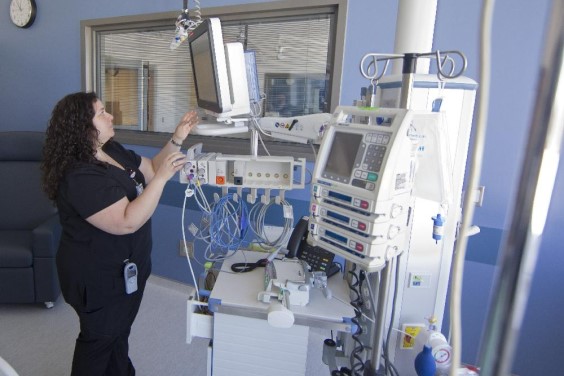March 27, 2020 – Our dependence on technology in the 21st century has been made more apparent by the recent events that have engulfed the world. With social distancing, many working from home, and nations in total lockdown, our interconnectedness is becoming totally technical. Healthcare providers are on the frontline in fighting the COVID-19 pandemic. And in today’s post we look at some of the technologies impacting the work of nurses, other healthcare practitioners, and patients. Here are some of the most recent healthcare technology innovations that are helping in the fight.
Portable Monitors and Tablets
Until recently nurses would walk around with patient files and do bedside visits to check up on the health status of their charges to ensure they were okay. Today, however, nurses are using portable monitors to tell them about the health status of all of their patients providing information like:
- Respiratory rates
- Oxygen saturation levels
- ECG tracings, and much more.
This information is shared through a central monitoring system to portable screens that nurses have with them at all times saving lots of lives every year.
Wearable Devices and Apps
Then there is wearable technology that can keep track of vital health statistics such as:
- Heart rates
- Sleep
- Respiration
- Exercise
The data collected by wearables can also be downloaded and shared with healthcare providers. Wearables can also provide important patient information such as allergies in case of an emergency.
There are also a number of apps that have been developed for nurses to help them deliver services. App technology and smartphone technology makes it possible today to check on a patient’s heartbeat. Smartphones are increasingly becoming portable data centers which when shared with doctors and other health professionals allows for quick access to look at vital patient information.
Electronic Health Records
Paper filing systems are finally giving way to data stored electronically. The electronic health record lets a nurse quickly save and retrieve information in an emergency. These online records provide detailed patient information including a medical history. They can also be searchable databases for nurses looking for very specific information.
An electronic health record also consolidates data so that it can be represented graphically making charting a patient’s progress visually easy. And having health data information in real-time means nurses can provide more accurate and timely responses to a patient’s needs, and means less likelihood of mistakes.
Smart Beds
Smart beds are fairly new. What makes them smart is the trackers and sensors embedded into them providing vital information about a patient. They are critically important for patients undergoing long-term care, and can help to prevent in-hospital injuries.
A smart bed can send data to remote monitoring systems to allow nurses to see patient information at any time. The beds can provide a detailed history to help nurses identify patterns to gain a better understanding of a patient’s condition, or even help physicians with diagnosis.
Automated IV Pumps
These devices regulate the flow of medication to patients. They are extremely accurate and include:
- pumps for delivering nutrition at a predetermined time.
- pumps that let patients manage their own pain control.
There are a growing number of different types of software-controlled IV pumps that are making nursing patient care easier for graduates from institutions like Carson-Newman Online. Keeping up with the technological enhancements requires continuous training on what is new and what is just around the corner.
Centralized Command Centers
One of the best innovations to come to hospitals is centralized command centers. Centralized command centers are one of the best innovations coming to hospitals today. Through them, a healthcare team can improve the patient experience while managing critical medical supplies. Capacity planning has been shown in these last few weeks to be a critical issue for hospitals in facing the COVID-19 pandemic. As more hospitals turn to command centers the aggregation of the data this technology provides will anticipate shortages of critical things like protective masks, ventilators, catheters, and other devices.
Telehealth and Related Applications
A shortage of doctors and nurses in many countries around the world is a huge problem. One way to deal with this is to implement telehealth technology. This allows nurses and doctors to communicate with patients no matter where they may be. A patient can be diagnosed and get the help he or she needs without leaving home. Nurses and doctors can instruct remote patients on how to do self-checkups, informing them if they need to be seen in person.
Nurses do not have to commute to a patient’s home if the patient cannot come to the hospital. A good Internet connection is all that is needed combined with telehealth apps.
The telehealth apps can work in reverse allowing doctors and nurses to monitor patients at the hospital remotely. These same apps can be used to send help to a patient if needed. Healthcare workers can link patients to information online so that they can understand symptoms and help alleviate their fears.
Final Word
The COVID-19 pandemic is testing health infrastructures around the world. The technologies described above, however, should help us to save thousands more than we could have done a decade ago. And as medical technology improves, will allow our nurses and doctors to achieve better outcomes. What we cannot do, is stop making healthcare technology investments.
















